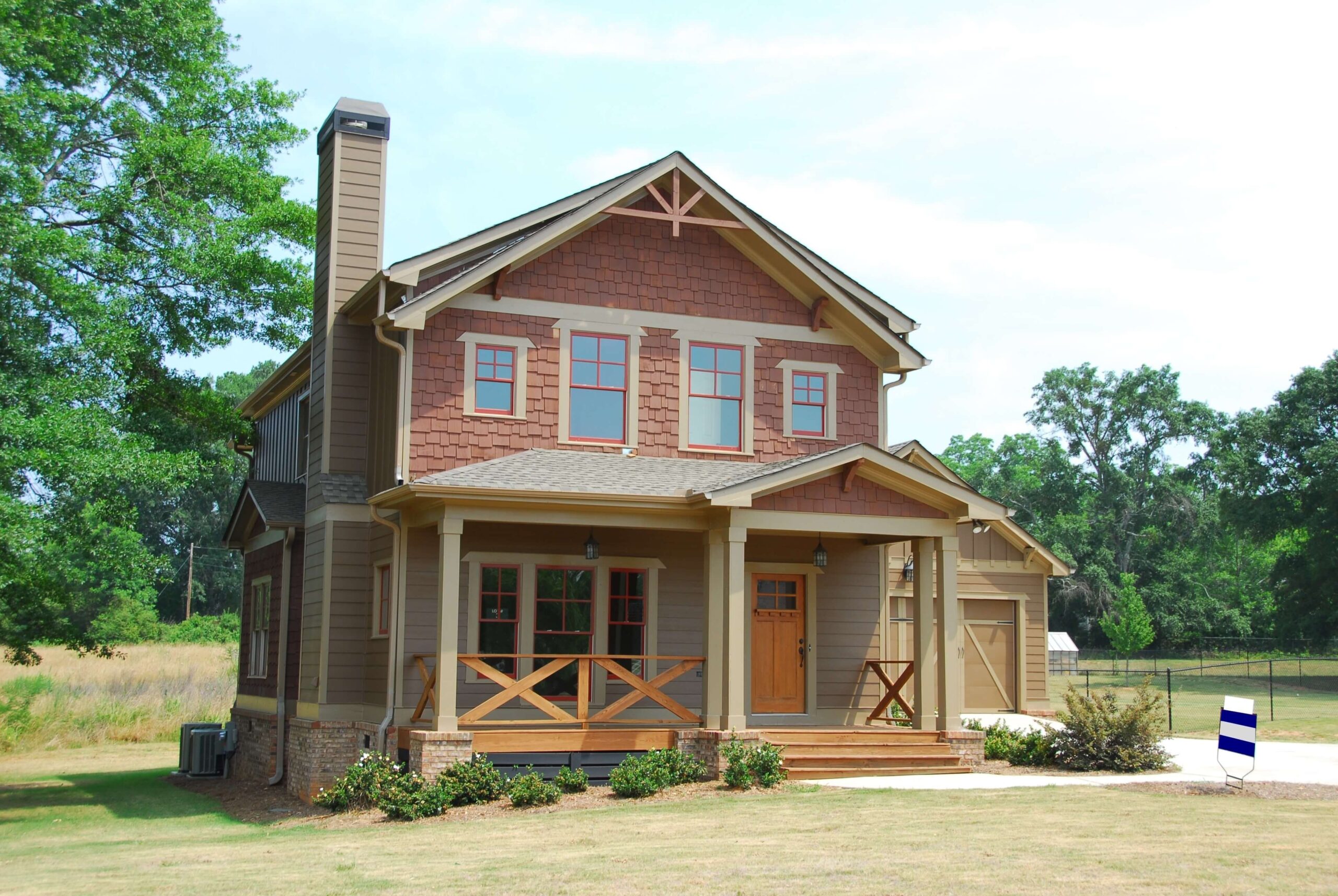How many rental properties do you need to achieve financial freedom? It’s a question that many aspiring real estate investors ask themselves. While there isn’t a one-size-fits-all answer, the key lies in understanding your financial goals and developing a solid investment strategy.
HOW MANY RENTAL PROPERTIES FOR FINANCIAL FREEDOM?
Financial freedom means different things to different people. For some, it may mean having enough passive income to cover all expenses and enjoy a comfortable lifestyle without the need for traditional employment. So, how many rental properties does it take to reach this level of financial independence? The truth is, there is no magic number. It depends on various factors such as property location, cash flow potential, market conditions, and personal preferences. In this article, we will explore these aspects further and provide insights into determining the right number of rental properties needed for your path toward financial freedom.

Understanding Financial Freedom
Financial freedom is a goal that many people aspire to achieve. It refers to the state of having enough passive income to cover all living expenses and achieve one’s desired lifestyle without being dependent on a traditional job or paycheck. To understand how many rental properties are needed for financial freedom, it’s important to grasp the concept itself:
- Passive Income: Financial freedom relies on generating passive income streams, which are earnings received with minimal effort or active involvement. Rental properties can provide a reliable source of passive income.
- Expenses vs. Income: Calculate your current monthly expenses and compare them against your existing sources of cash flow (such as salary, investments, etc.). This will give you an idea of how much additional income is required for financial independence.
- Cash Flow Analysis: Conducting a thorough analysis of potential rental properties will help determine their profitability in terms of cash flow generation. Consider factors such as property prices, mortgage payments, maintenance costs, vacancy rates, and average rental incomes in the area.
- Leverage & Equity Growth: Real estate investments offer the opportunity for leverage through mortgages. By using borrowed money to purchase properties, you can amplify returns and accelerate equity growth over time.
- Diversification: Depending solely on rental properties may not be advisable due to market fluctuations or unforeseen circumstances. Diversifying your investment portfolio with other assets like stocks or bonds can mitigate risk.
While there isn’t an exact number of rental properties that guarantee financial freedom for everyone since individual situations vary greatly based on personal goals and circumstances; owning multiple well-performing properties can be instrumental in achieving economic independence faster.
Remember that real estate investing requires careful planning, research, and ongoing management efforts. Consulting with professionals such as real estate agents or financial advisors who specialize in this field could prove beneficial when determining the right number of rental properties needed for your path toward financial freedom.
| Key Points |
|---|
| – Financial freedom is achieved when passive income covers all living expenses. |
| – Rental properties can provide a steady source of passive income. |
| – Conduct a cash flow analysis to determine the profitability of potential rental properties. |
| – Leverage and equity growth can be advantageous in real estate investing. |
| – Diversify your investments to reduce risk and maximize returns. |
The Benefits of Rental Properties
Investing in rental properties can provide numerous benefits for those seeking financial freedom. Here are some key advantages:
- Steady Cash Flow: Rental properties generate a regular stream of income through monthly rent payments, offering a reliable source of cash flow.
- Appreciation: Over time, rental properties tend to increase in value, allowing investors to build equity and potentially earn substantial profits upon selling.
- Tax Advantages: Rental property owners can take advantage of various tax deductions, including expenses related to maintenance, repairs, insurance premiums, property management fees, and even mortgage interest payments.
- Diversification: Owning rental properties provides an opportunity to diversify your investment portfolio beyond traditional stocks and bonds. This diversification helps spread risk and protect against market volatility.
- Leverage Potential: Real estate investing allows individuals to leverage their investments by using borrowed money (mortgages) combined with their own capital as a down payment or initial investment amount.
- Hedge Against Inflation: Rental property values generally rise with inflation rates over time; thus, they serve as a hedge against the eroding effects of inflation on the value of money.
- Control over Investment: Unlike other forms of investments where you have limited control over returns, owning rental properties gives you more control over factors such as choosing tenants and setting rental rates.
Calculating Your Financial Goals
To determine how many rental properties you need to achieve financial freedom, it’s essential to calculate your financial goals. Here are the steps to help you determine the number of rental properties required:
- Assess Your Monthly Expenses
- Calculate your monthly living expenses, including housing costs, utilities, groceries, transportation, and any other regular bills.
- Consider future expenses like education or healthcare costs.
- Determine Desired Passive Income
- Decide on the amount of passive income you would like to generate each month.
- This should be sufficient to cover your monthly expenses comfortably while leaving room for savings or unexpected costs.
- Calculate Rental Property Income
- Research average rental prices in your target market.
- Estimate potential rental income based on factors such as location, property type (e.g., apartments vs. houses), and local demand.
- Consider Expenses and Cash Flow
- Account for expenses associated with owning and managing rental properties: mortgage payments (if applicable), property taxes, insurance premiums, maintenance costs (repairs/upgrades), and vacancy rates (estimate percentage of time without tenants).
- Subtract these expenses from the estimated rental income to determine cash flow.
- Determine Number of Properties Required
| Monthly Passive Income Goal | Estimated Cash Flow per Property |
|---|---|
| $X | $Y |
- Divide your desired monthly passive income goal ($X) by the estimated cash flow per property ($Y).
- The result will give you an approximate number of properties needed to reach your financial goal.
Remember that this calculation provides a rough estimate and doesn’t account for unforeseen circumstances or changes in market conditions. Additionally:
- Evaluate real estate opportunities within budget constraints
- Diversify investments across different types of properties or locations
- Consult with a financial advisor or real estate professional to ensure a comprehensive approach.
By following these steps and performing the necessary calculations, you’ll have a clearer understanding of how many rental properties are required to achieve your financial freedom goals.
Factors to Consider When Investing in Rental Properties
When investing in rental properties, it’s important to consider various factors that can significantly impact your financial freedom. Here are some key considerations to keep in mind:
- Location: The location of a rental property plays a crucial role in its success. Look for areas with high demand for rentals, good infrastructure, and proximity to amenities like schools, shopping centers, and public transportation.
- Property Type: Different types of properties have varying levels of profitability and maintenance requirements. Consider whether you want to invest in single-family homes, multi-unit buildings, condos/apartments, or commercial properties based on your goals and available resources.
- Market Conditions: Analyze the local real estate market before making any investment decisions. Research trends such as vacancy rates, rent prices, job growth, and property appreciation potential to ensure you’re entering a favorable market.
- Cash Flow Analysis: Calculate the potential cash flow from each rental property by estimating expenses (mortgage payments, taxes, insurance) and expected rental income. Positive cash flow is essential for long-term financial stability.
- Property Management: Decide if you’ll manage the property yourself or hire a professional management company. Property management requires time commitment and expertise; outsourcing this responsibility may be beneficial if you lack experience or prefer a hands-off approach.
- Maintenance Costs: Budgeting for ongoing maintenance costs is vital for maintaining property value and tenant satisfaction over time. Factor in repairs/upgrades needed now or anticipated down the line when evaluating investment opportunities.
- Legal Considerations: Familiarize yourself with local landlord-tenant laws and regulations governing rental properties in your area. Compliance with legal obligations helps protect your interests while ensuring fair treatment of tenants.
Remember that these factors should guide your decision-making process when investing in rental properties but always conduct thorough due diligence specific to each opportunity. By carefully considering these factors, you can increase your chances of achieving financial freedom through successful rental property investments.
| Section | Points |
|---|---|
| Location | Proximity to amenities, demand for rentals, infrastructure |
| Property Type | Single-family homes, multi-unit buildings, condos/apartments |
| Market Conditions | Vacancy rates, rent prices, job growth |
| Cash Flow Analysis | Expenses vs. expected rental income |
| Property Management | Self-management or professional company hire? |
| Maintenance Costs | Budgeting for repairs/upgrades over time |
How Many Rental Properties Do You Need?
When it comes to achieving financial freedom through rental properties, the number of properties you need can vary depending on various factors. Here are a few considerations to help you determine how many rental properties may be required for your financial goals:
- Financial Objectives: Start by defining your financial objectives and what level of passive income you aim to generate from your rental properties. This will give you a target to work towards.
- Cash Flow Analysis: Conduct a cash flow analysis for each potential property, considering expenses such as mortgage payments, taxes, insurance, maintenance costs, and vacancies. Determine how much positive cash flow each property generates and calculate the total amount needed to achieve your financial goals.
- Leverage Opportunities: Explore financing options that allow you to leverage your investments effectively. By using mortgages or other forms of financing, you can acquire more properties with less upfront capital investment.
- Market Conditions: Research the local real estate market where you plan to invest in rental properties. Consider factors such as demand for rentals, occupancy rates, rent prices, and future growth prospects in order to gauge whether it’s feasible to attain desired results with fewer or more properties.
- Risk Management: Diversifying your portfolio across multiple rental units can mitigate risk associated with vacancies or unexpected expenses that may arise from individual units.
- Time Commitment: Assess the level of time commitment required for managing multiple rental properties effectively alongside other personal or professional responsibilities.
Remember that there is no one-size-fits-all answer when determining how many rental properties are needed for financial freedom—it ultimately depends on individual circumstances and preferences.
| Factors To Consider | Tips |
|---|---|
| Financial objectives | Set clear income targets |
| Cash flow analysis | Calculate property expenses |
| Leverage opportunities | Explore financing options |
| Market conditions | Research local real estate |
| Risk management | Diversify your portfolio |
| Time commitment | Assess personal workload |
By carefully evaluating these factors, you can determine the number of rental properties required to achieve financial freedom while minimizing risks and maximizing returns.
Strategies for Building a Real Estate Portfolio
When it comes to building a real estate portfolio for financial freedom, there are several strategies you can employ. Here are some key approaches to consider:
- Start Small and Scale Up: Begin by investing in one or two rental properties and gradually expand your portfolio as you gain experience and confidence.
- Diversify Property Types: Consider diversifying your investments across different property types such as residential homes, apartments, commercial spaces, or vacation rentals. This helps spread the risk and potentially increase returns.
- Research Location: Conduct thorough research on potential investment locations before making any purchases. Look for areas with strong economic growth, low vacancy rates, good rental demand, and positive cash flow potential.
- Analyze Investment Returns: Use metrics like cap rate (capitalization rate), cash-on-cash return, gross yield, and net operating income to evaluate the profitability of each property before adding it to your portfolio.
- Consider Financing Options: Explore various financing options available to fund your real estate acquisitions such as traditional mortgages, private lenders, partnerships/joint ventures, or utilizing self-directed retirement accounts (SDIRA) for tax advantages.
- Monitor Market Trends: Stay informed about market trends in the real estate industry including local market conditions, interest rates fluctuations & regulatory changes that may impact your investments.
- Leverage Technology: Utilize technology tools like online listing platforms/apps which help streamline property searches & management processes saving time & effort while improving efficiency.
- Build a Reliable Network: Develop relationships with professionals in the field including real estate agents/brokers, property managers, contractors/laborers, etc., who can provide valuable insights/advice along with support/services when needed.
Remember that building a successful real estate portfolio takes time and careful planning; it’s important to continuously assess and adjust your strategy based on market conditions and individual goals.
Maximizing Cash Flow and Passive Income
To maximize cash flow and passive income from rental properties, it’s crucial to adopt strategies that optimize your returns. Here are some key factors to consider:
- Choose high-demand locations: Invest in areas where there is a strong demand for rental properties. Look for neighborhoods with good schools, amenities, employment opportunities, and transportation links.
- Screen tenants carefully: A thorough tenant screening process can help minimize vacancies and reduce the risk of non-payment or property damage. Conduct background checks, verify employment history, and request references from previous landlords.
- Set competitive rental rates: Research local market trends to determine the optimal rent for your property. Setting rates too low may result in missed potential income while setting them too high could lead to prolonged vacancies.
- Minimize vacancy periods: Actively manage turnover by promptly addressing maintenance issues between tenancies and advertising new rentals as soon as possible after a tenant gives notice.
- Reduce operating costs: Find ways to lower expenses without compromising on property quality or tenant satisfaction. Negotiate better deals with suppliers, implement energy-efficient measures, or explore cost-sharing initiatives with other investors.
- Consider short-term rentals: If legally permitted in your area, offering short-term rentals through platforms like Airbnb can potentially yield higher returns than traditional long-term leases but require additional management efforts.
- Implement smart marketing strategies: Utilize online listing platforms effectively by highlighting unique selling points of your property such as proximity to popular attractions or desirable features like pet-friendly policies or included utilities.
- Regularly review rents: Periodically reassess rental rates based on market conditions and inflationary trends to ensure you’re maximizing income potential over time.
By focusing on these strategies for maximizing cash flow and passive income from your rental properties, you can move closer towards achieving financial freedom through real estate investment.
Conclusion
In conclusion, the number of rental properties needed to achieve financial freedom can vary greatly depending on individual circumstances. While some may find success with a single property, others may need multiple investments to reach their goals.
It is important to consider factors such as location, rental demand, cash flow, and long-term growth potential when deciding how many rental properties are necessary for financial freedom. Additionally, diversifying your portfolio across different types of properties and markets can help mitigate risk and maximize returns.
Ultimately, the key to achieving financial freedom through rental properties lies in careful planning, thorough research, and a proactive approach to property management. By taking these steps and staying informed about market trends and investment opportunities, individuals can pave their way toward a secure and prosperous future.
Remember that real estate investment is not a one-size-fits-all solution. It requires patience, persistence, and ongoing evaluation of your goals and strategies. With dedication and the right mindset, building a successful portfolio of rental properties is within reach for anyone seeking financial independence.






